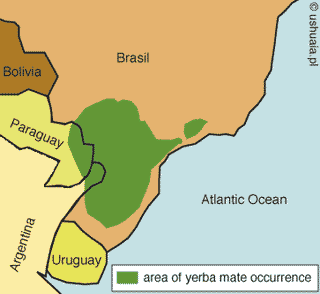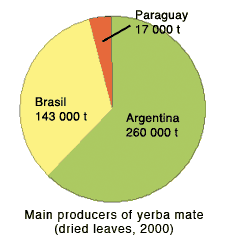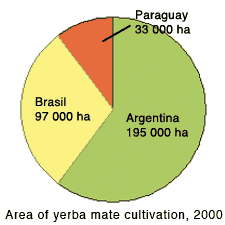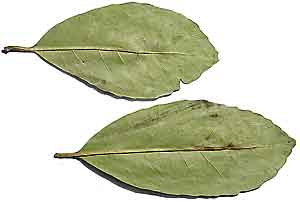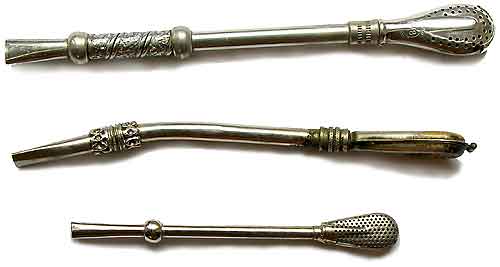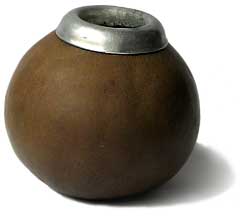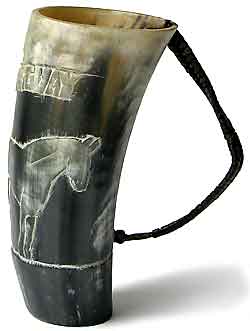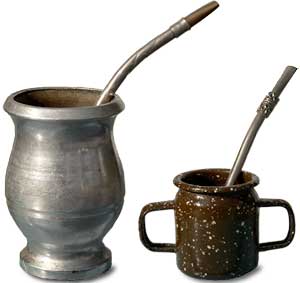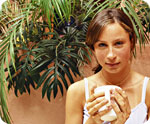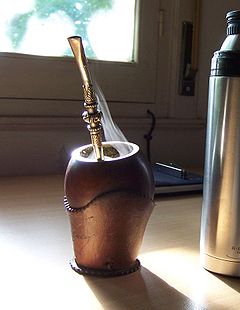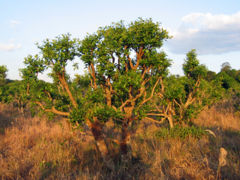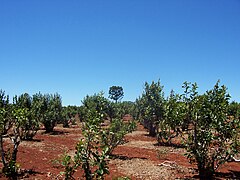來源:
http://www.naturalnews.com/024273.htmlNatural News
(NaturalNews) More than a drink, Yerba Mate (pronounced "yerba mahtay") has become a cultural phenomenon throughout South America and its use is rapidly spreading to the United State. Its benefits are obvious. In Buenos Aires, where people carry their Mate with them throughout the day, the sight of an obese person is rare.
Known to South Americans as the "Drink of the Gods", yerba mate is a hot beverage made from the dried leaves of the Ilex Paraguariense bush indigenous to Argentina, Brazil, Paraguay and Uruguay. And thanks to its caffeine-like content, the drink is a natural stimulant.
Yerba Maté has been used since ancient times as a tea, is recommended throughout South America for its rejuvenating, nutritional, and energizing effects, particularly for mental and physical fatigue. Yerba Maté can be taken as an effective weight-loss aid and scientific research shows Maté to be a powerful antioxidant and that it can protect DNA from double-strand breaks. It also has the ability to inhibit LDL oxidation. Maté naturally contains a wide range of polyphenols, methylxanthines, and chlorogenic acid, which together are responsible for its many health benefits.*
Traditionally steeped and served in a hollowed-out gourd and sipped through a metal straw designed to filter out stems and leaf bits, yerba mate was first consumed by the Guarani Indians centuries ago.
It is the national drink of Argentina, where drinkers of yerba mate (pronounced yair-ba mah-tay) are even more ubiquitous than coffee drinkers in the United States. It is not uncommon to see Argentines walking down the street sipping out of a mate gourd.
In recent years, its popularity has spread to the United States, where countless online vendors and teahouses, coffee shops and restaurants from Boston to Los Angeles are catering to an adapting palate. Those who drink it say they have turned to the beverage as an alternative pick-me-up with less caffeine and acidity than coffee and a host of supposed health benefits.
Many Americans may not like Yerba Mate the way Argentinians drink it –- as it has an earthy and somewhat bitter taste. For that reason, many sellers in the U.S. are blending yerba mate with mint, vanilla, orange or other flavorings.
Web vendors claim the beverage, which contains a mix of vitamins and amino acids, can "boost immunity, restore youthful hair color, retard aging, combat fatigue, control the appetite and eliminate insomnia", and more –- and research is tending to support many of those claims, such as finding Yerba Mate to have hypocholesteremic (cholesterol lowering), antioxidant, hepato protective (protecting the liver) properties and a bitter taste -– all of which are attributed to the phenolic constituents of the leaves.
Yerba Mate is packed with naturally-occurring nutrients and anti-oxidants and there are 196 volatile (or active) chemical compounds found in the Yerba Mate plant. Of those, 144 are also found in green tea. Yerba Mate contains 11 polyphenols. Polyphenols are a group of phytochemicals. Phytochemicals (phyto- meaning plant) are recently-discovered compounds that act as powerful antioxidants and are considered to exhibit anti-cancer effects in mammals by strengthening an organism's natural defenses and protecting it against cellular destruction (i.e. lycopene in tomatoes, flavonoids in blueberries, and isoflavones in soy).
Yerba Mate has caffeoyl derivatives (caffeic acid, chlorogenic acid, 3,4-dicaffeoylquinic acid, 3,5-dicaffeoylquinic acid and 4,5-dicaffeoylquinic acid) and flavonoids (quercetin, rutin and kaempferol). In addition to polyphenols, Yerba Mate leaves contain saponins (In fact, one recent study yielded 3 new saponins in the Yerba Mate leaf!) Saponins are phytochemicals that have been found to specifically stimulate the immune system and aid the body in protecting against disease.
In 2005, researchers at the University of Illinois studied 25 different types of mate. They found the tea to contain "higher levels of antioxidants than green tea"... and, based on cell studies, "may help prevent oral cancer."
Each infusion of Mate contains:* Vitamins - A, C, E, B1, B2, Niacin (B3), B5, B Complex
* Minerals - Calcium, Manganese, Iron, Selenium, Potassium, Magnesium, Phosphorus
* Additional Compounds - Fatty Acids, Chlorophyll, Flavonols, Polyphenols, Trace Minerals, Antioxidants, Pantothenic Acid and 15 Amino Acids.
According to Dr. Mowrey, Director of Mountainwest Institute of Herbal Sciences, one group of investigators from the Pasteur Institute and the Paris Scientific Society concluded that Yerba Mate contains "practically all of the vitamins necessary to sustain life". They focused especially on Pantothenic Acid, remarking that it is "rare to find a plant with so much of this significant and vital nutrient... It is indeed difficult to find a plant in any area of the world equal to Mate in nutritional value."
In addition, results from a study done by researchers at the University of Madrid assert a high content of mineral elements, especially K, Mg, and Mn, in Mate. They considered those findings "to be of great relevance" to the nutritional value of Mate infusions.
Yerba Mate Research:Vascular responses to extractable fractions of Ilex paraguariensis -- yerba mate -- in rats fed standard and high-cholesterol diets.Biol Res Nurs. 2005 Oct;7(2):146-56.
Programa de Pos-Graduacao em Ciencias Fisiologicas-Fisiologia Animal Comparada, Fundacao Universidade Federal do Rio Grande, Brazil.
The authors investigated the vasorelaxant properties of the aqueous and acid n-butanolic extractable fractions from yerba mate leaves. Perfusion pressure was evaluated using isolated and perfused mesenteric arterial beds (MABs) from rats fed hypercholesterolemic and standard diets. Extract-induced vasorelaxation in the presence and absence of various inhibitors was examined. These results suggest that yerba mate induces vasodilation in rats fed a standard diet in a dose-dependent manner and that the hypercholesterolemic diet substantially reduced the effect of yerba mate.
Naturally occurring proteasome inhibitors from mate tea (Ilex paraguayensis) serve as models for topical proteasome inhibitors. - J Invest Dermatol. 2005 Aug;125(2):207-12. Arbiser JL, Li XC,
Department of Dermatology, Emory University School of Medicine, Atlanta, Georgia 30322
Proteasome inhibitors have emerged as a clinically important therapy for neoplastic disease, with velcade, an organoboron compound used extensively in multiple myeloma. Recently, epigallocatechin gallate has been found to be a potent inhibitor of the proteasomal chymotrypsin-like activity. Other compounds that inhibit angiogenesis and are active as chemopreventive agents, such as curcumin, also inhibit proteasome activity. We have screened natural product extracts and found that extracts of yerba mate tea (Ilex paraguayensis) inhibit the growth of these endothelial cells. The extract was fractionated and found to have novel cinnamate esters that inhibit proteasome activity. Based upon these findings, preclinical and clinical trials of topical cinnamate esters as proteasome inhibitors are warranted for psoriasis and other inflammatory disorders.
Ilex paraguariensis -- Yerba Mate -- extracts inhibit AGE formation more efficiently than green tea. - Fitoterapia. 2005 Jul;76(5):419-27. Lunceford N, Gugliucci A.
Glycation, Oxidation and Disease Laboratory, Division of Basic Medical Sciences, Touro University-California, Mare Island, Vallejo, CA
Glycation, the nonenzymatic adduct formation between sugar dicarbonyls and proteins, is one key molecular basis of diabetic complications due to hyperglycemia. Given the link between glycation and oxidation, we hypothesized that herbal extracts with a high concentration of antioxidant phenolics might possess significant in vitro antiglycation activities as well. The aim of the present study was to address the hypothesis that polyphenol-rich yerba mate extracts are capable of inhibiting advanced glycation end-products (AGEs) formation and to compare the potency of these extracts with green tea and with the standard antiglycation agent aminoguanidine. Taken together our results demonstrate a significant, dose-dependent effect of water extracts of yerba mate on AGE adducts formation on a protein model in vitro, whereas green tea displays no significant effect. The inhibition of AGE formation was comparable to that obtained by using millimolar concentrations of the standard antiglycation agent aminoguanidine.
Cardioprotective effects of Ilex paraguariensis (yerba mate) extract: evidence for a nitric oxide-dependent mechanism. - Clin Nutr. 2005 Jun;24(3):360-6. Schinella G, Fantinelli JC, Mosca SM -- Catedra de Farmacologia, Facultad de Ciencias Medicas, Universidad Nacional de La Plata, CIC, La Plata 1900, Buenos Aires, Argentina.
To examine the effects of a yerba mate extract on post-ischemic alterations derived from 20 minutes of global ischemia and 30 minutes of reperfusion.
Methods: Isolated rat hearts were treated 10 minutes before ischemia and the first 10 minutes of reperfusion with yerba mate 30 microg/ml. In other hearts, chelerythrine (1 microM), a protein kinase C blocker, or l(G)-nitro l-arginine methyl ester (l-NAME), a nitric oxide synthase inhibitor, were administered prior to yerba mate infusion.
Conclusions: These data are the first demonstration that yerba mate extract attenuates the myocardial dysfunction provoked by ischemia and reperfusion and that this cardioprotection involves a diminution of oxidative damage through a nitric oxide-dependent mechanism.
Antioxidant activity of a botanical extract preparation of Ilex paraguariensis (yerba mate): prevention of DNA double-strand breaks in Saccharomyces cerevisiae and human low-density lipoprotein oxidation. - J Altern Complement Med. 2003 Jun;9(3):379-87
We analyzed the antioxidant properties of Ilex paraguariensis infusion popularly known as yerba mate, by using two experimental models: the induction of DNA double-strand breaks (DSB) by hydrogen peroxide (H(2)O(2)) and lethality in Saccharomyces cerevisiae, as well as peroxide and lipoxygenase-induced human low-density lipoprotein (LDL) oxidation. Conclusions: Yerba mate is thus a rich source of polyphenols and has antioxidant properties comparable to those of green tea which merit further in vivo intervention and cross-sectional studies.
Yerba Mate Side EffectsSide effects similar to caffeine excess are possible from drinking too much yerba mate tea or taking too high a dose of yerba mate supplements.
Sources for this article included Columbia University, Dr. Ray Sahelian, No Borders, (
www.Goyerbamate.com) and (
www.Yerbamate.com) .
當美國尚未制訂統一的有機品認證標準前,全國有33個私人和11個州立的有機農產品認證機構,各有不同的認證標準及標章,經常讓眾多消費者感到非常困惑。










